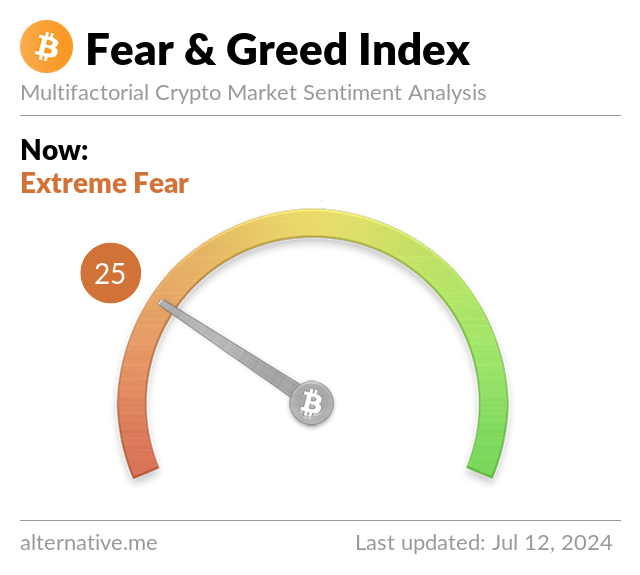Bitcoin (BTC) recently entered the “extreme fear” zone with a score of 25 out of 100 on the well-known sentiment indicator, the Fear and Greed Index. This is the first time in 18 months that the index has fallen to such a low level. Such a drop in the index was last seen when the crypto market was recovering from the shocking collapse of the FTX exchange.
Mt. Gox and German Government Cause Extreme Fear
Currently, the crypto market is facing significant issues, including repayment from the Mt. Gox exchange and continuous sales of 50,000 BTC seized by the German government during an operation in January. These events have led to sharp price movements across the crypto market and caused the Fear and Greed Index to drop to 25.

As is known, Bitcoin’s price rose to $59,516 on July 11, driven by lower-than-expected US inflation data that increased hopes for multiple interest rate cuts this year. Despite this positive price momentum, the largest cryptocurrency failed to break the resistance level at $60,000 and began to pull back.
The primary trigger for this decline in Bitcoin’s price was cited as the additional pressure from another significant Bitcoin sale by the German government. On July 11, the German government sent BTC worth $286 million to various trading platforms. The German government, aiming to liquidate all its BTC holdings, continued the selling pressure by sending 2,700 BTC to various trading platforms early today.
Spot Bitcoin ETFs Could Provide Market Support
Amid the strong selling pressure across the market, there has been a positive development with increased inflows into spot Bitcoin exchange-traded funds (ETFs) in the US. On July 11, approximately $79 million in new inflows were recorded for these investment products, with most of the inflows going to BlackRock‘s spot ETF, IBIT. This fund flow is expected to have a supportive effect against the selling pressure hitting the overall market.
According to CoinMarketCap data, Bitcoin was trading around $57,000 at the time of writing.

 Türkçe
Türkçe Español
Español









